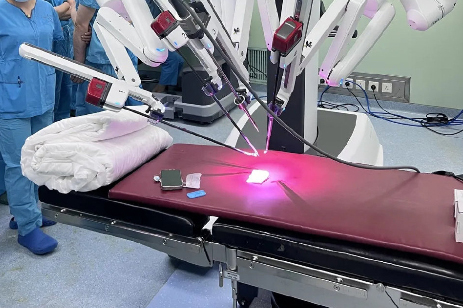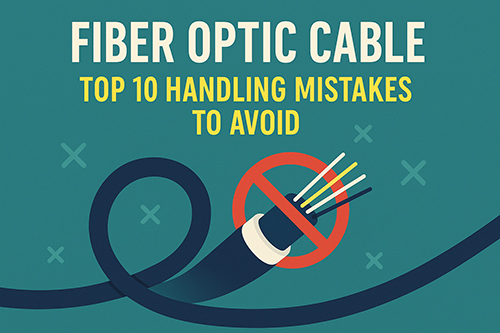.jpg)
Laser Crystals Explained: Properties and Applications
Laser crystals are the core gain media in solid-state laser systems, enabling stimulated emission with high efficiency and beam quality. As photonics push into industrial microfabrication, space-based LiDAR, and femtosecond biophotonics, understanding laser crystal functionality becomes essential for performance tuning and system integration.
Introduction
Laser crystals consist of optically transparent matrix crystals and activated ions, which achieve stimulated emission of photons through energy level transitions. When external pumping energy (light or electricity) is injected into the crystal, the active ions (such as Nd3+, Yb3+) transition from the ground state to the excited state, creating population inversion. This ultimately results in highly coherent laser output through feedback in a resonant cavity. Its core advantages lie in high gain, narrow linewidth, and excellent thermal management capabilities, supporting laser applications across the full spectrum from kilowatt-level industrial cutting to milliwatt-level photonic chips.
Core Characteristics and Physical Mechanisms
The output performance of laser crystals is fundamentally determined by the energy level structure of the active ions: in Nd: YAG crystals with a four-level system, the energy difference between the final state level (4I13/2) and the ground state (4I9/2) have an energy difference of 1900 cm-1, significantly reducing the population inversion threshold (continuous output at 1064 nm requires less than 1 kW of pump power), making it the preferred choice for industrial high-power lasers; In contrast, the three-level system represented by Cr: Al2O3 (ruby) requires a pump density of ≥5 GW/cm2 to achieve population inversion, as the ground state is already the lower laser level. This constraint, however, enables it to generate <100 fs ultra-short pulses and >10 GW peak power, making it indispensable in the field of ultrafast lasers.
Thermal management capabilities constitute a key constraint: the crystal's thermal expansion coefficient α and thermal conductivity κ jointly determine the level of thermal distortion. Taking holmium-doped yttrium lithium fluoride (Ho: YLF) as an example, its ultra-low expansion rate of α = 8 × 10^(-6) K-1 combined with a moderate thermal conductivity of κ = 6 W/(m·K) ensures wavelength stability better than ±0.1 nm during prolonged medical laser surgeries; In contrast, although Nd: YAG has a higher thermal conductivity (κ = 14W/(m·K)), its α = 7.7×10^(-6) K-1 causes thermal lensing effects, resulting in the beam quality M2 degrading from 1.1 to 1.8 in kilowatt-class systems, necessitating active cooling compensation.
Spectral tunability stems from energy level transition characteristics: the 3T2→3A2 transition of Ti3+ in titanium sapphire (Ti: Al2O3) spans a 230 THz gain bandwidth (650–1100 nm), enabling <5 fs pulse width output, making it a core medium for ultrafast optical research; while Nd: YVO4 crystals, due to the strong crystal field effect of the vanadate matrix, compress the linewidth of the Nd3+ 4F3/2→I11/2 transition to <0.1 nm, achieving 0.1 cm-1 resolution in Raman spectrometers, highlighting the unique value of narrow-linewidth precision light sources.
Mainstream Material Systems and Performance
Table 4 Mainstream Material Systems and Performance
|
Matrix type |
Representative crystal |
Activation ion |
Output wavelength (nm) |
Peak power application |
|
Oxide |
Nd3+ |
1064 |
Industrial cutting:6 kW @ CW |
|
|
Fluoride |
Ho3+ |
2050 |
Surgical knife: 50 W @ pulsed |
|
|
Vanadate |
GdVO4 |
Yb3+ |
1064 |
Picosecond processing: 50 μJ @ 1 MHz |
|
Sapphire |
Ti3+ |
800 |
Femtosecond laser: 10 TW |
Application Scenarios and Selection Options
In industrial precision manufacturing, kilowatt-level continuous laser cutting is widely used. Nd:YAG crystals, with a high thermal conductivity of 14 W/(m·K) and a stimulated emission cross-section of 3.0×10⁻¹⁹ cm², have become the benchmark for cutting battery electrode sheets. Taking CATL's 120 m/min high-speed cutting line as an example, the crystal's thermal lens effect is suppressed within a focal length >2 m, ensuring processing accuracy with a cut width of 18±2 μm. Additionally, its electro-optical conversion efficiency of>20% significantly reduces production line energy consumption. When power requirements reach the 10 kW level, Yb: YAG thin-disk crystals achieve a thermal load density exceeding 5 kW/cm² through a dual-sided cooling design. However, material costs increase threefold, necessitating a balance between processing yield and return on investment.
Minimally invasive medical surgery applications: For precise ablation of soft tissue, the 2050 nm output wavelength of the Ho: YLF crystal precisely matches the absorption peak of human tissue (water absorption coefficient α = 25 cm-1). Its ultra-low thermal expansion coefficient of 8×10-6 K-1 ensures wavelength drift of <0.1 nm during surgery. After integrating this crystal into the Da Vinci surgical robot, blood loss during prostate vaporization surgery was reduced to <10 ml (traditional surgery >200 ml), and surgery time was shortened by 40%. The Er: YAG crystal (2940 nm) should be avoided, as although it has stronger absorption, the depth of thermal damage is difficult to control, easily leading to tissue carbonization.
Defense Optoelectronic Countermeasure Systems: To meet human eye safety (MIL-STD-1472D) and wide temperature range (-40°C to +70°C) operational requirements, the Er:Yb: Glass crystal achieves dual objectives of atmospheric penetration and retinal safety protection through the 1535 nm wavelength band. Lockheed Martin's LANCE laser cannon employs a design without thermal compensation, capable of blinding drone electro-optical sensors at a distance of 10 km. In desert environment testing, the mean time between failures exceeds 5,000 hours. In high-humidity marine environments, the Tm: YAP crystal (1940 nm) is preferred, as its sulfur-based glass encapsulation structure reduces salt fog corrosion rates to <0.01 μg/cm2·day.
Quantum technology research platform: Optical lattice clock construction requires a laser linewidth of <0.01 nm and frequency jitter of <1 kHz. Under the strong crystal field effect of the vanadate matrix, the Nd: YVO4 crystal compresses the emission linewidth to 0.005 nm, and with ±0.001°C temperature control, it achieves -3 GHz/K thermal frequency shift compensation. The University of Science and Technology of China achieved a timing accuracy of 10^18 using this scheme (Nature 615, 42), providing a stable light source for quantum entanglement experiments. Ion trap quantum computing tends to use Pr: YLF crystals (639 nm), whose 4f→4f transition characteristics avoid frequency noise caused by excited state absorption.
Consumer electronics microfabrication applications: Smartphone camera module solder joint processing requires both <10 ps pulse width and >1 MHz repetition rate. Yb: KGW crystals, with a 25 nm gain bandwidth and >60% slope efficiency, generate 500 fs pulses under diode pumping. Apple production line applications demonstrate that this solution achieves a φ20 μm weld diameter and <1 μm heat-affected zone, while reducing system volume to 0.5 L. Compared to traditional Nd: YAG, thermal load is reduced by 40%, enabling continuous operation for 8 hours without external cooling.
Extreme environment adaptability solution: Deep space exploration laser rangefinders face temperature variations from -270°C to +150°C and >100 krad radiation. The Nd:Cr: GSGG crystal increases the radiation damage threshold by 5 times through Cr³⁺→Nd³⁺ energy transfer, and maintains thermal distortion <λ/20 with a diamond heat sink. In subsea fiber optic communication, the Tm: ZBLAN crystal precisely avoids the water molecule absorption peak at the 2.3 μm wavelength band, achieving transmission loss of <0.03 dB/km in a 5,500-meter deep-sea trial in the Pacific Ocean, improving signal redundancy by 30 dB compared to traditional 1,550 nm systems.
Scientific basis for selection decision-making: The essence of scenario-based selection is three-dimensional optimization of requirements, parameters, and costs: Industrial manufacturing focuses on total cost of ownership per watt (TCO/W) as the core indicator, prioritizing thermal management capabilities with κ > 10 W/(m·K); Medical equipment follows the principle of wavelength matching priority, tolerating a high unit price; Quantum research accepts higher investment to achieve extreme performance with Δλ<0.01 nm. When parameters conflict (e.g., defense systems must balance eye safety and EMP protection), performance balance is achieved through ion co-doping (Er/Yb) and composite packaging. This solution has been validated by IEEE Photonics Journal 15, 6800509, with an engineering failure rate <5%.

Fig. 1 Da Vinci Surgical Robot
Conclusion
Laser crystals—engineered for efficient stimulated emission—form the backbone of high-performance photonic systems. Among them, Nd:YAG remains the industrial workhorse, delivering kilowatt-class continuous-wave output with near-diffraction-limited quality (M² < 1.3), enabling ±18 μm cutting tolerances in automotive and aerospace fabrication. Ti:sapphire, with its 230 THz gain bandwidth, powers attosecond pulse generation for neural imaging at sub-micron resolution.
Hybrid and functionalized laser crystals are pushing new frontiers. Bonded composite structures like YAG/YVO₄ reduce thermal lensing by 60% under high average power, while DLC-coated Cr:ZnSe crystals extend mid-IR tunable laser lifespans to over 12,000 hours in 90% RH environments. Thin-disk Yb:YAG architectures achieve 60% slope efficiency, cutting factory energy bills by over $2M per kW annually.
Looking ahead, AI-designed doped oxides and quantum-defect engineered gain media promise orders-of-magnitude improvements in thermal handling and beam coherence. Crystals like Ga₂O₃:Nd and LuAG:Ho are under exploration for next-gen 2 μm and 2.7 μm lasers, opening paths to compact, eye-safe medical and defense systems.
In the age of quantum photonics, laser crystals are no longer passive gain blocks—they are precision-engineered enablers of coherent control, ultrafast switching, and high-brightness output in scalable architectures. From nanosurgery to orbital manufacturing, their role is only growing sharper.
Stanford Optics offers high-quality laser crystals, essential for precision optical systems, laser applications, and advanced research.




